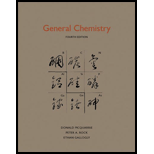Solutions for General Chemistry
Browse All Chapters of This Textbook
Book Details
This new fourth edition of General Chemistry takes an atoms-first approach from beginning to end. In the tradition of McQuarrie s many previous works, it promisesto be another ground-breaking text. This superb new book combines the clear writing and wonderful problems that have made McQuarrie famous among chemistry professors and students worldwide. Presented in an elegant design with all-new illustrations, it is available in a soft-cover edition to offer professors a fresh choiceat an outstanding value. Student supplements include an online series of descriptive chemistry Interchapters, a Student Solutions Manual, and an optional state-of-the-art OnlineHomework program.
Sample Solutions for this Textbook
We offer sample solutions for General Chemistry homework problems. See examples below:
More Editions of This Book
Corresponding editions of this textbook are also available below:
